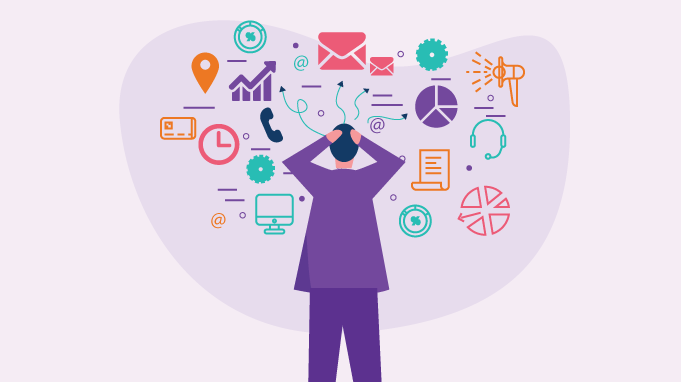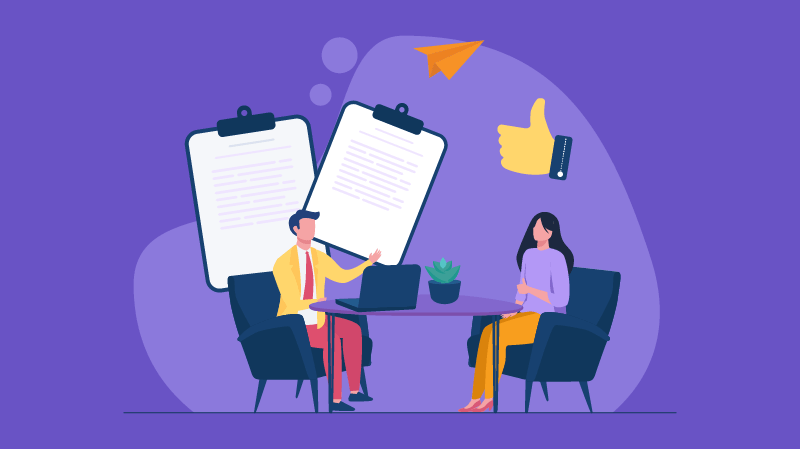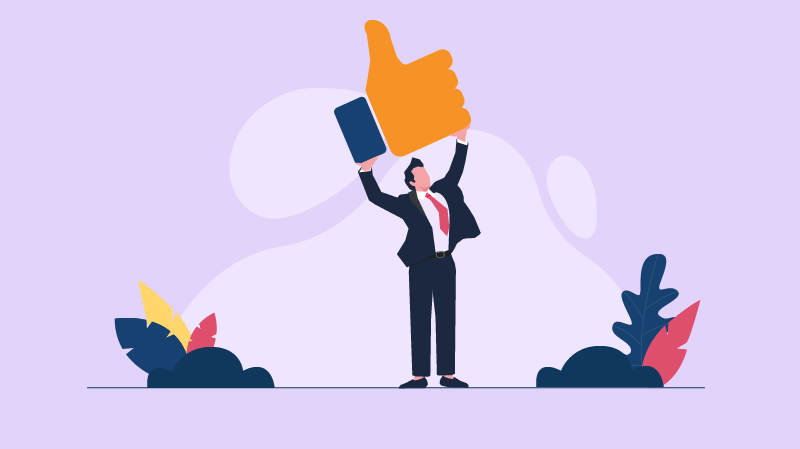Decision Fatigue- Have You Fallen Prey To It?
Steve Jobs had always been seen to wear a black turtleneck, jeans, and sneakers. Barack Obama, on most days, wears dark formal wear. Director Christopher Nolan favors a blue shirt and blazer.
The reason? To prevent decision fatigue.
“You’ll see I only wear grey or blue suits. I’m trying to pare down decisions. I don’t want to make decisions about what I’m eating or wearing. Because I have too many other decisions to make,” said Barack Obama to Vanity Fair in 2012.
Taking too many decisions can take its toll on you. Repeated decision-making saps your mental energy, reduces your willpower, and increases the probability of making irrational choices. This concept is called decision fatigue.
In the workplace, suffering from decision fatigue is a common scenario. After day-long decision-making sessions, employees in positions of taking big decisions feel tired and lose their energy. This lowers their accuracy of making the right choices, and as a result, some crucial decisions fall through.
Therefore, to bring down the time and effort needed to make decisions, these visionaries shift(ed) to making choices that needed their energy and focus.
What Is Decision Fatigue?

Famed fictional detective Hercule Poirot used to say, “use your little grey cells mon ami.” But what happens when you use the grey cells in excess?
From our early morning decisions to what to eat for breakfast to deciding our commute back home from work, we make countless decisions in a day.
A dictionary defines decision fatigue as the deteriorating quality of decisions made by individuals after a long decision-making session. It is the cumulative effect of repetitive and exhaustive decision-making.
Roy Baumeister, the psychologist who coined the term “decision fatigue” says that we have a finite amount of willpower. So the more decisions you make, the lesser the willpower remains.
Decision Fatigue In The Workplace
From deciding on whom to hire, organizing individuals into teams, promoting employees based on their performances, and conducting exit interviews, leaders have to look after many things. They are responsible for carrying out responsibilities and making big decisions. Therefore, their decision-making skills must be top-notch.
But this is also the reason why managers are the most common preys of decision fatigue. In an organization, a lot depends on the decisions made by those in senior-level managerial positions. Therefore, they use up a lot of their mental capacity in every decision they make. This ultimately saps their willpower and causes fatigue.
So when these leaders take decisions in a state of fatigue, it can so happen that they might opt for a more accessible option which can harm the company in the long run. It can affect the company’s bottom line, cause internal conflicts and may sometimes even lead to laying off the wrong employee.
Effects of Decision Fatigue
Psychologists at The National Academy of Sciences did research on parole board judges. They examined the factors that impacted whether or not a judge granted parole to a criminal. They thought the results would be factors like the type of crime or the kinds of laws broken. But the results astonished them.
The quality of their decisions was impacted according to the time of the day. The judges showed to make more flawed decisions as the day went by. They found, “prisoners who appeared early in the morning received parole about 70 percent of the time, while those who appeared late in the day were paroled less than 10 percent of the time.”
65 percent of judges were more likely to give favorable decisions in the morning than in the late afternoon. But due to continuous decision-making, they became drained and as a result, made poor decisions.
So how will you know you’ve fallen prey to decision fatigue? Here are some telltale signs-
Decreased Self-Control
Impaired self-regulation can be explained in relation to ego depletion.
Ego depletion explains the idea that we have a limited vault of mental resources. And our self-control or willpower draws upon these resources. So, when our energy to do a cognitive activity is low, our self-control takes a hit. In fact, impulse purchasing occurs in a state of ego depletion.
Impulse Purchases
Impulse purchasing is making unplanned decisions to buy some item that is usually made just before making the purchase.
As the day goes on and we are presented with more and more choices, the willpower to put energy into every decision reduces. Eventually, our brain tries to look for shortcuts or a way out.
This shortcut comes in the form of impulsive purchases. We try to make decisions without thinking about the consequences our choices might cause.
This concept can be better explained with an example.
Picture a departmental store where you have aisles of unlimited options to choose from. Imagine the amount of time it takes for you to just decide on a jar of jam. Multiply this into every item you need to buy. Imagine what it would do to your willpower! As a result, when you finally reach the cash register, you give in to the temptation of buying candies and sugared items.
Decision Avoidance
You will know decision fatigue has taken you by its grips when you start to completely avoid making decisions.
Decision avoidance is taking the easy way out when given the responsibility to make decisions. To avoid tradeoffs and the physical and emotional drain decision-making causes, fatigued people often take the option readily available.
Therefore, if in your workplace, your decision-makers aren’t giving you anything new it’s not because they are out of ideas. It is just that they are tired and fatigued to make any more new decisions.
How To Prevent Decision Fatigue From Affecting Your Productivity
1. Prioritise Important Tasks
Take account of the decisions you have to or might have to make throughout the day. Once you have charted them down, rank them in order of priority or importance.
Think of it like you’re going to make a decision about which project to fund first thing in the morning. Then move to which employee needs to take up training, discuss a new project with the marketing team and so on.
2. Prepare Your Next Day The Night Before
This is a practice I have personally started applying recently. I decide on the clothes I am going to wear to the office the night before. It’s a small step, but it saves a lot of time and saves up my mental energy to make decisions the next day.
Making small decisions like preparing your lunch the night before or deciding on the restaurant beforehand will allow you to expend your willpower in the right places. As a result, you might also be able to make better choices.
3. Simplify The Choices
Simplify your choices to take decision making out of the picture. By taking it out, I don’t mean you should avoid making decisions. But rather, focus on how you can reduce the time required to make some particular decisions.
For example how Steve Jobs wore the same clothes to work every day. He decided this was a part of his decision-making process that he didn’t want to use his willpower on.
Some other ways to simplify decision-making is by planning your entire schedule for the upcoming week, decide on the three places you are going to have lunch from in the week and so on.
4. Afternoon Naps
You feel refreshed after a nap, right? Sleeping is important as it rests our brain and allows for new information to be stored in it when we wake up.
So, when you’re having a hectic day that’s using up your willpower, a quick nap can refresh you. It’ll help you to make some good choices once you wake up.
5. Eat and Then Decide
In the example of the parole hearing that I talked about earlier in the article, the judges’ sense of judgment seemed to be deteriorating as the day went on. But only until lunch. Post lunch, the judges seemed to be back on track and favorable decision making again shot up to 65 percent.
Social psychologist Roy Baumeister says that low glucose levels can affect our decision-making capacity. He says that replenishing glucose can restore the ability to make decisions.
Therefore, to ensure effective decision making, keep your blood sugar level steady with a snack or healthy lunch.
6. Start With The Hardest Task
Early in the day, your motivation and willpower are high. So, make sure to use this time to make the most important decisions.
Pool in your willpower to make the best use of your resources and skills to get control over decision fatigue. Moreover, when you get done with the hardest task first, you will feel confident and at ease to make the other decisions. In fact, when the hardest one is done, you will be able to distribute your willpower equally for all the other tasks.
Wrapping Up
In 2017, research by RescueTime had found that employees on an average switch between 300 tasks every day! Let that sink in for a moment.
With the world becoming more fast-paced than ever and the internet providing an abundance of options, people have a lot to choose from. With various media channels providing you with the daily news, online shopping platforms to buy clothes, gadgets and even groceries, the world is at the tip of your fingers.
But every time that you go back and forth between these tasks, your focus gets disordered. It takes up a little of your willpower to make decisions and ultimately causes decision fatigue.
To avoid decision fatigue, you can take small, conscious steps towards a simpler and organized lifestyle.
















